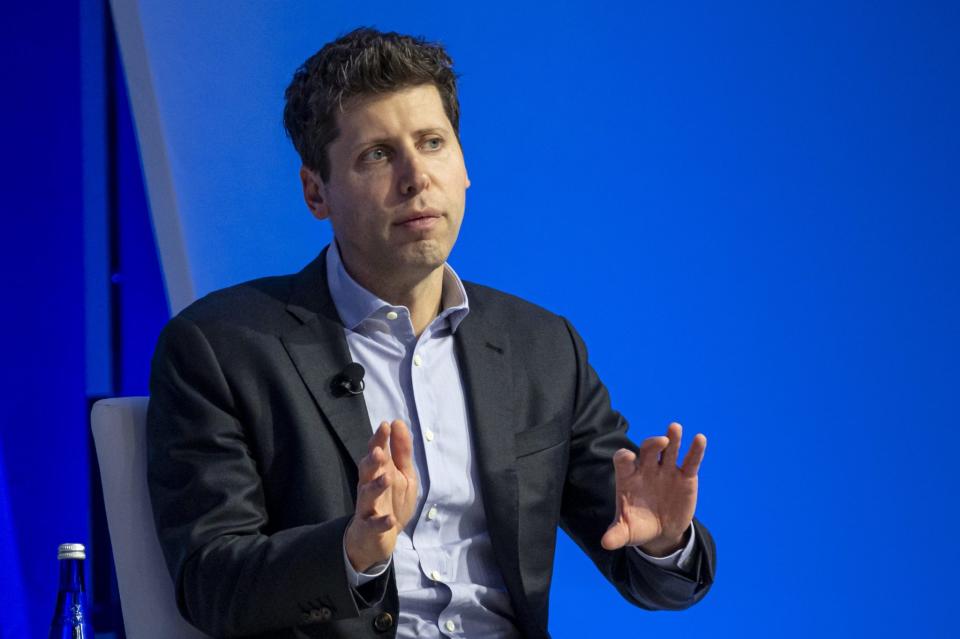OpenAI reportedly wants to build 5-gigawatt data centers, and nobody knows who could supply that much power

To support its ambitions to develop AI systems that would be as intelligent as people, OpenAI wants the U.S. government to help streamline the construction of massive data centers that would suck up as much power as major American cities. But experts are skeptical that anyone is in a position to meet those kind of energy demands.
Two weeks ago, Altman and an assortment of other top AI players had a meeting about infrastructure at the White House. The Biden administration subsequently announced a coordinated push across government to speed up the build-out of new AI data centers “in line with economic, national security, and environmental goals.”
But in the past couple of days, reports from Bloomberg and the New York Times have provided more details about what OpenAI in particular is trying to get from the government: support in its quest to build data centers with power requirements of five gigawatts each.
Five gigawatts is an astonishingly large amount of power. It’s the output of around five nuclear reactors—the kind of power you need for a whole major city like Miami. It’s as much as 100 times the requirement of a standard large data center. The Times reported that OpenAI’s 5GW proposal drew laughter from a Japanese official.
Constellation Energy CEO Joe Dominguez told Bloomberg that he had heard Altman wanted five to seven such data centers. According to Alex de Vries, the founder of tech energy research company Digiconomist, seven 5GW units would have “twice the power consumption of New York State combined.”
“It’s an extreme amount and, from a global electricity perspective, at that point you’re talking about more than 1% of global electricity consumption for just those data centers alone,” he said.
It’s not hard to see why Altman—who this week published a blog post outlining a glorious AI-powered future for humanity—is making this push now. (OpenAI did not respond to multiple requests for comment on the reports.)
OpenAI is currently the leader in generative AI, but—barring some major shift in how the technology works—maintaining that position will require an ever-increasing amount of computing power. Per the Times, each of these futuristic data centers would cost around $100 billion and contain 2 million AI chips, which is where those 5GW of power become necessary.
The $100 billion and 5GW figures strongly suggest that the facilities being pitched here are intended to house the “Stargate” supercomputing clusters that Microsoft and OpenAI have reportedly been planning for OpenAI’s future models. To give some sense of the scale of capital outlay here, Alphabet on Thursday announced that it will spend $3.3 billion building two cutting-edge data centers in South Carolina.
Power companies may have spare capacity in their grids to manage peaks in demand, but data centers need to run continuously, noted de Vries, who focused on the energy demands of the cryptocurrency sector before turning his attention to AI. “How many grids have an entire Miami in spare capacity, all the time?” he asked.
Although OpenAI’s power demand is the biggest that any tech company has so far expressed, some other AI players are also anticipating the need for larger, more power-hungry data centers. In March, Amazon Web Services bought a data center in Pennsylvania that is co-located with the Susquehanna nuclear power station; the plant produces 2.5 gigawatts and the data center’s seller, Talen Energy, said AWS would use up to 960 megawatts. And a week ago, Microsoft struck a deal with Constellation that will see the restart of a Three Mile Island reactor, providing 835 megawatts of carbon-free energy for Microsoft’s data centers from 2028.
Constellation’s Dominguez said at the time that nuclear plants are “the only energy sources that can consistently deliver” on the promise of carbon-free power for the hyperscalers’ new demands.
But regarding OpenAI’s five-gigawatt proposal, he told Bloomberg this week: “Whatever we’re talking about is not only something that’s never been done, but I don’t believe it’s feasible as an engineer, as somebody who grew up in this. It’s certainly not possible under a time frame that’s going to address national security and timing.”
This push for more bigger data centers is also taking place at a time of increasing resistance from local and national governments around the world, who are worried about the impact on their power grids and water supplies—the equipment in data centers needs to be constantly cooled using either air or liquid, with the latter being better suited to cooling modern, high-performance equipment.
In the U.S., new laws and tax rises have recently been used to stymie data-center developments in Virginia, Georgia, Arizona, Arkansas, and Illinois. The White House said last week that retired coal plants would provide useful brownfield sites for data center development—crucially, they already have connections to the grid in place—but for now, space remains scarce.
“One of the reasons [tech companies are] pushing for this is they’re facing increasing difficulties in expanding,” said de Vries. The researcher pointed to recent experiences in Scandinavia that suggest data centers do not create the significant amounts of jobs that their developers claim will come, adding: “The data center industry is getting found out that it’s not delivering as much as is promised for everything that they’re taking.”
It is worth remembering that Altman isn’t shy about coming up with big numbers that end up proving unfeasible. Back in February, the Wall Street Journal reported that he was looking for as much as $7 trillion in funding for new AI chips and for the power needed to run them. This week’s Times article maintains, based on fresh sourcing, that Altman did float that figure, though OpenAI denies that multitrillion-dollar projects were ever on the table.
The $7 trillion figure was widely scoffed at, and the Times reported this week that Altman had “since scaled his ambition down to hundreds of billions of dollars.”
This story was originally featured on Fortune.com